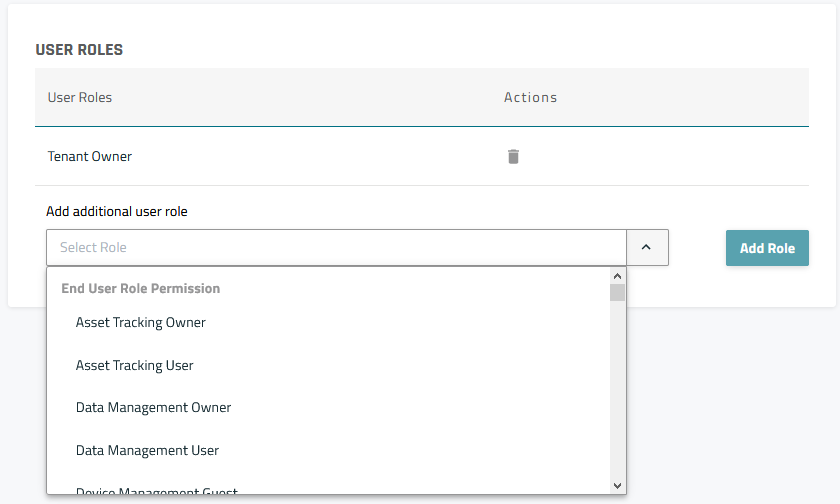System overview
This article will help first-time users get to know the thingsHub IoT platform’s core functions, features, and user interface (UI).
What is the thingsHub?
The thingsHub is an IoT platform used to monitor, store, analyze, and display IoT data from a wide variety of IoT devices.
It enables physical objects, such as machines, buildings, meeting rooms, counters, or load carriers, to be monitored and controlled by Plug & Play IoT devices--in real-time--and at the lowest possible effort and total cost. It acts as an interface between IoT components and enables communication between elements that would otherwise not be possible.
Depending on your user roles, you can use the thingsHub UI to connect and manage IoT devices; store, organize, analyze, and monitor IoT device data; and integrate IoT data with external systems.
The thingsHub system architecture

How the thingsHub works
1) IoT device communications. IoT devices are connected to the thingsHub via external IoT networks. This enables two-way communication between IoT devices and the thingsHub platform, with IoT devices transmitting measured data to the thingsHub, and the thingsHub able to send device configuration commands to IoT devices.
2) Processing, storing, and displaying device data. The thingsHub can display data using customized dashboards, and it can store data in data tables.
3) Data integrations. The thingsHub can be integrated with external IT systems to automatically send IoT data in configurations and formats suitable for existing systems.
4) Asset tracking. The thingsHub includes a powerful asset tracking tools and intuitive interfaces that enables you to easily monitor assets in near real-time, as well as to quickly and easily manage tracking devices and maintain your tracked asset inventory.
5) Administering the thingsHub. The thingsHub can be administered to allow multiple users access to distinct tenant resources based on their user roles.
1) How thingsHub connects to and manages IoT devices
Device communications.
1) IoT devices connect to IoT networks. IoT devices, such as room temperature sensors or tracking devices, are installed and communicate with IoT networks.
2) IoT networks connect to the thingsHub platform. The thingsHub establishes a connection to an IoT network using an IoT network connector, which facilitates two-way communication between IoT devices and the thingsHub tenant. This enables IoT devices to transmit (uplink) measured values and device states to the thingsHub, and the thingsHub to transmit (downlink) configuration commands to IoT devices.Device management includes monitoring device data, adding and removing devices, remotely configuring devices, managing device drivers, and organizing data by assigning device labels.
2) How thingsHub processes, stores, and displays IoT data
Data processing
An IoT device transmits measured values and device states in the form of raw data, which is not generally decipherable by humans. To make this raw data understandable to humans, the thingsHub uses a device driver to decode the raw data into the device’s measured values, such as temperature, and states, such as battery level.
Data storage and organization
Temporary storage. By default, the data transmitted from each IoT device is temporarily stored and displayed in its particular device details page for up to 7 days.
The following screenshot displays data transmitted from a single room sensing device: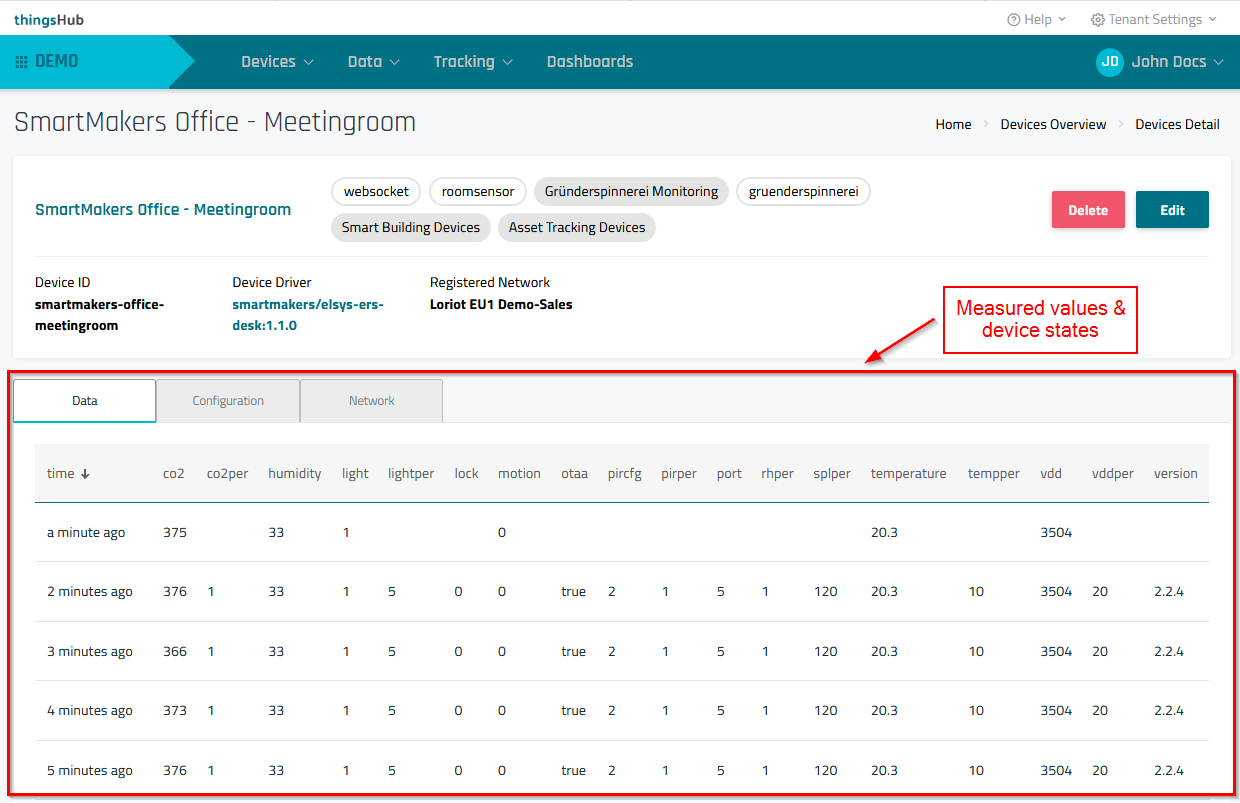
Long-term data storage. Create data tables for long-term storage, create IoT data dashboards, and integrate IoT data with external systems.
The following screenshot shows a data table created to display and store data from all devices assigned “websocket” & “roomsensor” labels: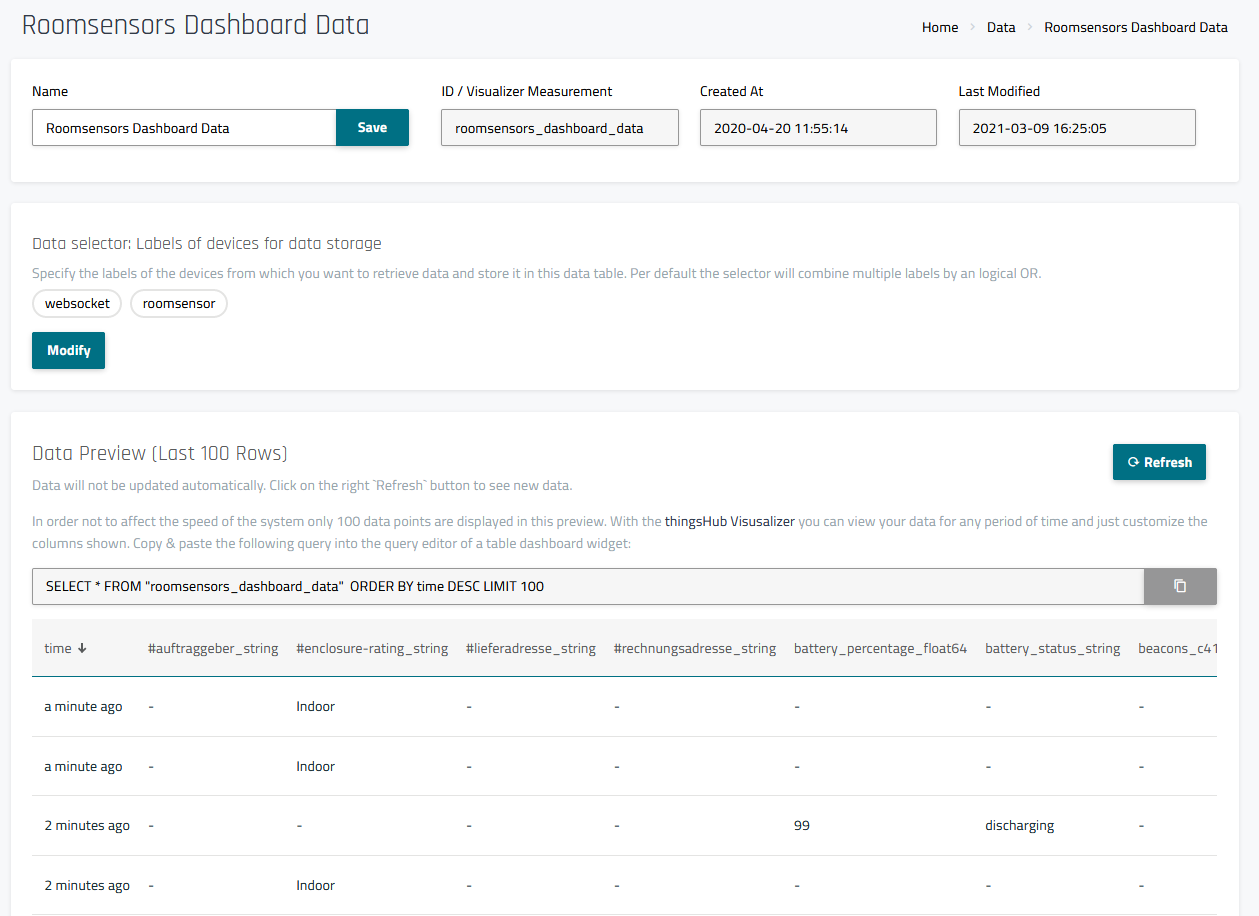
Organizing device data. Assigning device labels enables you to logically sort and group devices based on shared characteristics, such as installation location or sensor type. For example, you could assign the labels roomsensor and 4th-floor in order to group and analyze data from all the room sensors on the 4th floor of a building.
In addition to organizing and sorting devices, labels are required to do the following tasks:Create Data tables and dashboards.
Send device data to external systems via Integrations
Displaying data
Dashboards. In addition to viewing IoT data in device details and data tables, you can create custom IoT data dashboards. Dashboards are customized graphical and textual visualizations that enable you to monitor measured values and device states from multiple IoT devices over time.
The following screenshot is an example dashboard that displays the energy used by a coffee maker:
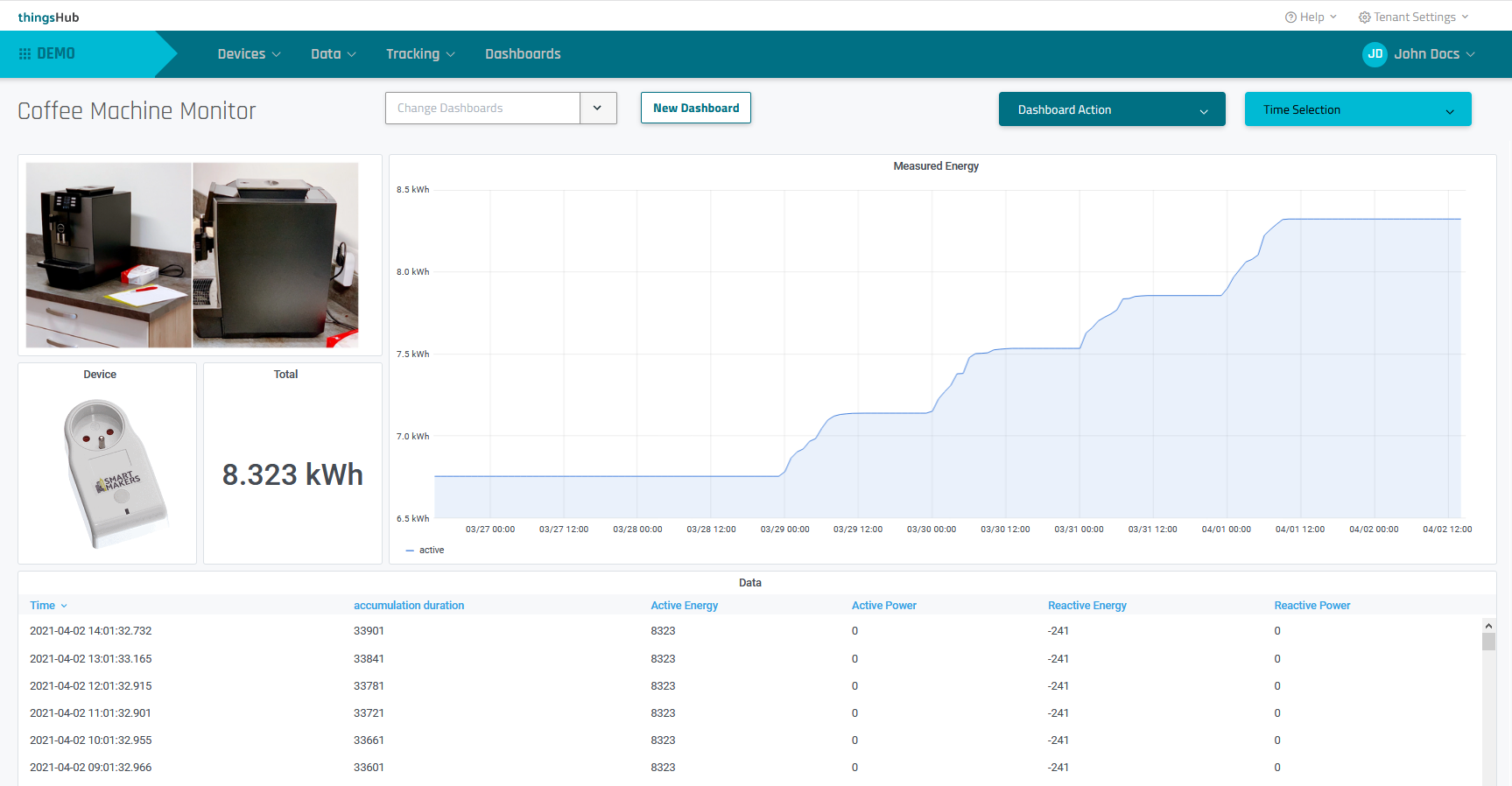
3) Data integrations
Use the thingsHub’s intuitive integration wizards to automatically forward IoT data to external systems.
4) Asset tracking
In the thingsHub, you can view the precise location of your assets in near real-time--at any time--depending on the settings you choose. In addition, you can manage all of your tracking devices easily and without coding, and it requires no IT integration of tracking sensors into your systems.
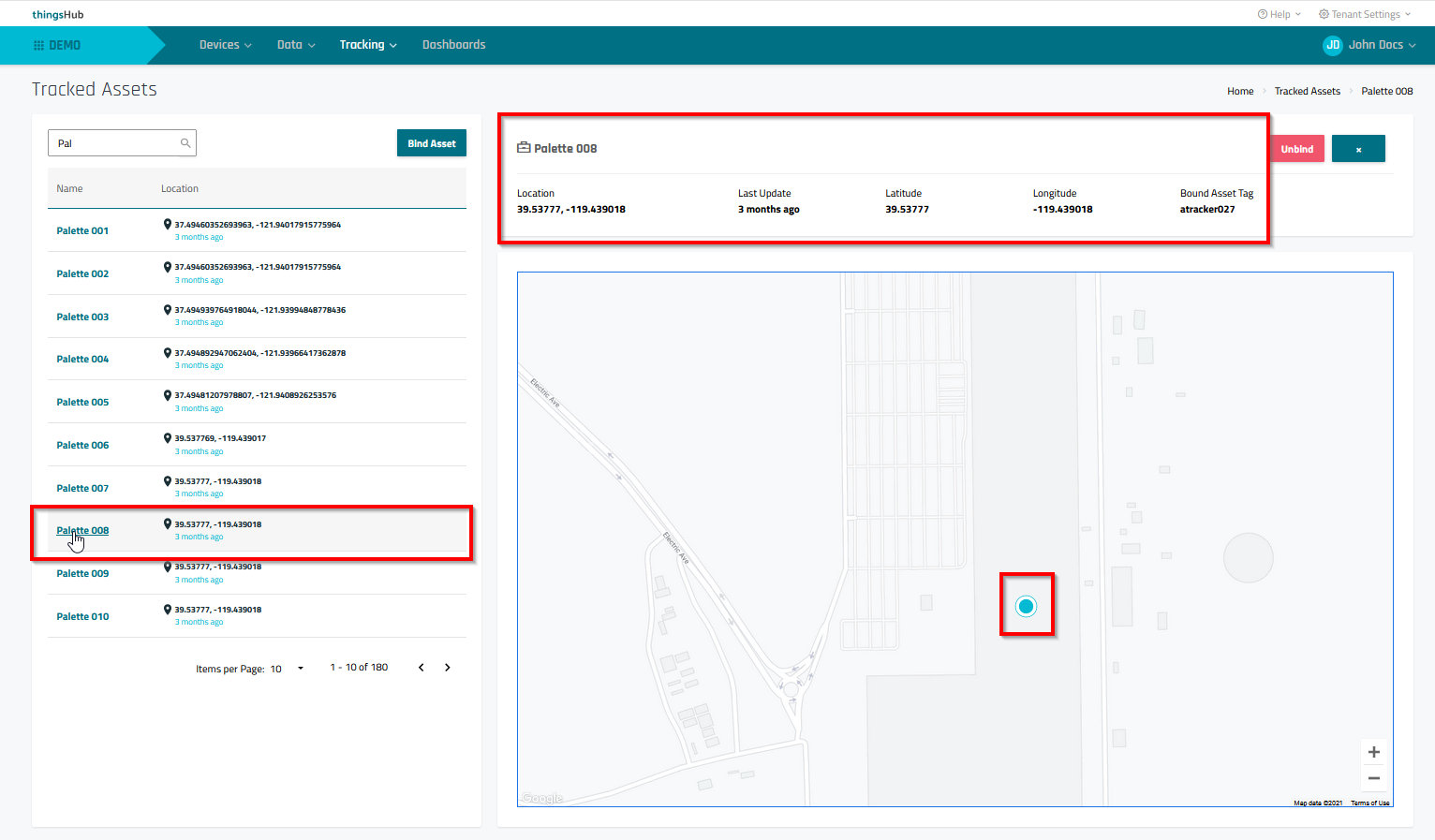
5) Tenant resource management
User resource access. Managing each user’s access to tenant resources is simplified by assigning different user roles.
